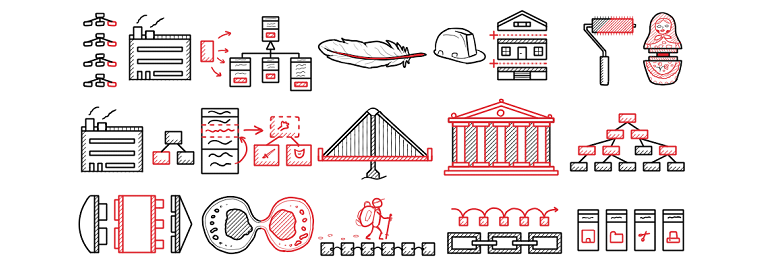Blueprints for Programming
30 Apr 2020
The Path to Coding Success
Design Patterns are solutions to problems that software engineers repeatedly encounter. Such solutions can be recycled and reused multiple times in various situations. They can be interpreted and implemented in ways that they never exactly repeat. Design patterns are practical and have many advantages. Prior to the acceptance of a design pattern, skilled programmers go through trial and error to discover the best way to show relationships between classes in object-oriented programming and to describe interactions between objects. Unlike algorithms which give a step-by-step procedure, design patterns are a proven approach that guide you in your desired direction.
Design Patterns help new programmers to learn by example from the ways of the professionals. Design patterns are like shoes. You may have multiple types of shoes, such as sneakers, slippers, heels, boots, or crocs, but they all serve the same function of providing protection and comfort to the human foot. Each shoe has its special purpose as well and are used to aid in different situations. You can clean your shoes, similar to how you clean up code by ensuring proper formatting and coding standards. It is important to code effectively, increase productivity, and improve site functionality.
The How To…
 Design patterns require a name, program description of when it is applicable, solution description of the relationships, and well as the consequences of implementing the pattern. Types of object-oriented design patterns include creational, structural, and behavioral. Since they are solutions to classic problems, design patterns appear in many facets such as software processing, testing, architecture, may be specific to each programming language, user interfaces, databases, and real-time systems. The four most prominent design patterns are: factory, singleton, observer, and model-view-controller.
Design patterns require a name, program description of when it is applicable, solution description of the relationships, and well as the consequences of implementing the pattern. Types of object-oriented design patterns include creational, structural, and behavioral. Since they are solutions to classic problems, design patterns appear in many facets such as software processing, testing, architecture, may be specific to each programming language, user interfaces, databases, and real-time systems. The four most prominent design patterns are: factory, singleton, observer, and model-view-controller.
Time to Use Design Patterns
I have been using design patterns throughout my journey as an aspiring computer scientist, without formally realizing and acknowledging the importance of it. When creating web applications, I have worked with MVC implementations that dealt with a user interface that is decoupled so that my model is separated from the way that it is presented to the user. The database (model) and view that is presented to the user (HTML/CSS) are disconnected. The information that the user view is decided upon by the controller, which defines the behavior of the app. Additionally, in my ICS 111/211 Java programming classes, I have worked with the prototype creational design pattern.
In ICS 314, we have worked with Meteor as a framework which uses the MVC pattern and MongoDB as a database. In our team of developers, we may work on different parts of the site at the same time from our own computer, since application concerns are divided. With our final project, the singleton pattern is used for the list of restaurants and menu items in the database. The observer method is used when objects interact with one another and must be notified of a change of state, such as with the registration of an account and submission of a restaurant. The user may view the published listings of restaurants by subscribing to the collection. Admins may modify their data, along with the webpages that are subscribed and linked to the modification. React is used for front end development and user interface design. Properly implementing design patterns are essential for efficient software engineers.